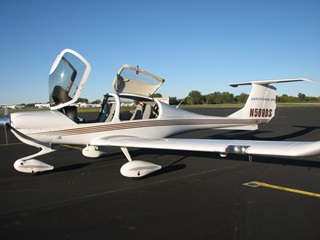 This is a question that pops up often in conversation with developing flying clubs. Most clubs fall into two primary categories, equity and non-equity. Equity, meaning the club is the sole owner of the aircraft as represented on the aircraft registration. Non-equity, implying the club leases its aircraft from the owner/owners. Clubs can also be a hybrid of equity and non-equity, where the club owns one aircraft and leases another; generally clubs falling into this category are still considered an equity club because of the stake in the one equity aircraft. Both equity and non-equity clubs have various benefits and shortcomings.
This is a question that pops up often in conversation with developing flying clubs. Most clubs fall into two primary categories, equity and non-equity. Equity, meaning the club is the sole owner of the aircraft as represented on the aircraft registration. Non-equity, implying the club leases its aircraft from the owner/owners. Clubs can also be a hybrid of equity and non-equity, where the club owns one aircraft and leases another; generally clubs falling into this category are still considered an equity club because of the stake in the one equity aircraft. Both equity and non-equity clubs have various benefits and shortcomings.
Equity clubs enjoy the benefit of true aircraft ownership among its members, with the tradeoff of a one-time membership fee (which is often substantial enough to represent a share of the aircraft). This fee, often referred to as the ‘buy in’, is helpful for clubs looking for serious professional members. The higher barrier to entry can help filter problem members, and promotes respect for the aircraft. One disadvantage is that the number of potential members (with cash in hand) decline.
One of the biggest challenges for equity clubs is managing the buy-in cost for high value aircraft. Keeping buy-in cost low in an equity club can only be accomplished in a few ways: adding more members or having less owner equity. Since many clubs keep a limit on membership to ensure aircraft availability, a popular alternative is to manage the balance of assets and liabilities Some of us might remember the owner equity formula from econ 101:
Owner Equity = Assets – Liabilities
In an equity club the assets include the airplane, reserves in the bank, and any other things of value owned by the flying club. Liabilities represent the debts owed by the club. The most common debt a club can incur is an aircraft loan. By taking out a loan in the name of the flying club, liabilities become greater and the owner equity decreases. Most flying clubs determine their buy-in by equally splitting the owner equity amongst the number of members. Therefore as liabilities increase the club buy-in decreases. Most clubs with an established financial track record can obtain an aircraft loan with no personal guarantee; however startup clubs without a financial history may need to have a club member personally cosign for the loan.
Non-equity clubs are very common among startup organizations looking to get in the air fast. Non-equity clubs generally lease their aircraft from the registered owner, on an exclusive basis. The owner does not have to be a club member. However if the owner wishes to continue to use the aircraft during the lease period he or she should be a member and use the aircraft as such. Members of a non-equity club have the option of joining with a very low one-time fee, often just a security deposit, which grants them the right to use the leased aircraft. Different lease agreements place the responsibility of maintenance, insurance, and engine reserves on different parties; however it is common to see a leaseback where the owner provides an airworthy, maintained aircraft and the club provides the insurance and hangar. In these cases, the clubs monthly dues generally pay for both the hangar and insurance, while the hourly rate pays for the leaseback fee.
Non-equity clubs have very low barriers to entry, and can attract less responsible members. It’s important to remember that setting expectations and a culture of respect can help alleviate aircraft and financial neglect. A leaseback owner will only continue to lease to a flying club if he or she feels his aircraft is being treated properly. For this reason the longevity of a non-equity club is greatly affected by the relationship between club members and aircraft owners.
Is it better to own or lease an aircraft in a flying club? Opinions vary based on the clubs mission and values. Equity clubs instill a value and a pride of ownership among its members. They generally have high buy-in’s and lower hourly rates. Non-Equity clubs make it easy for members to join and be part of the community, but can require more work to groom a successful culture. The best type of club is one that has a full roster of members and active aircraft. Choose a structure that makes your club successful.
